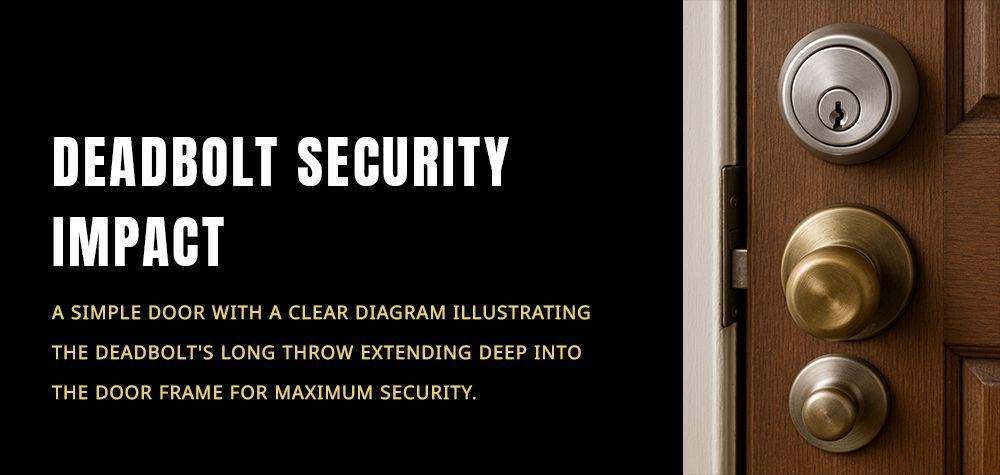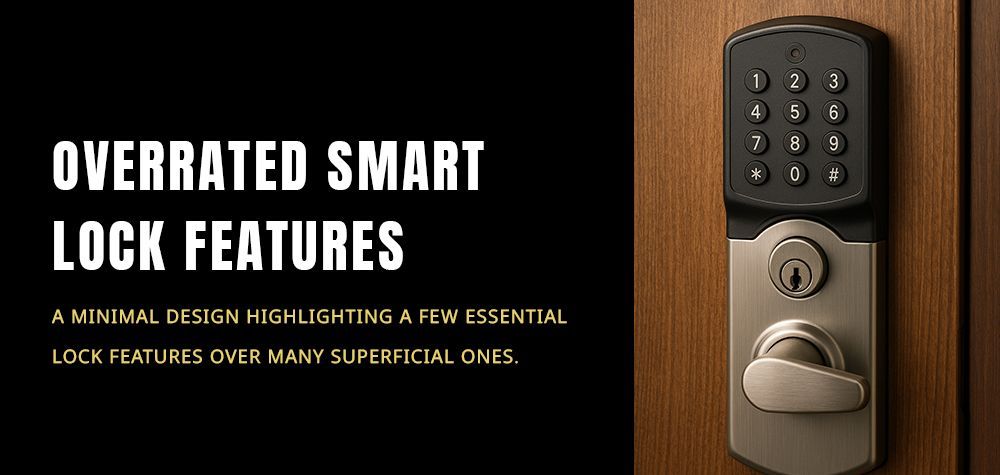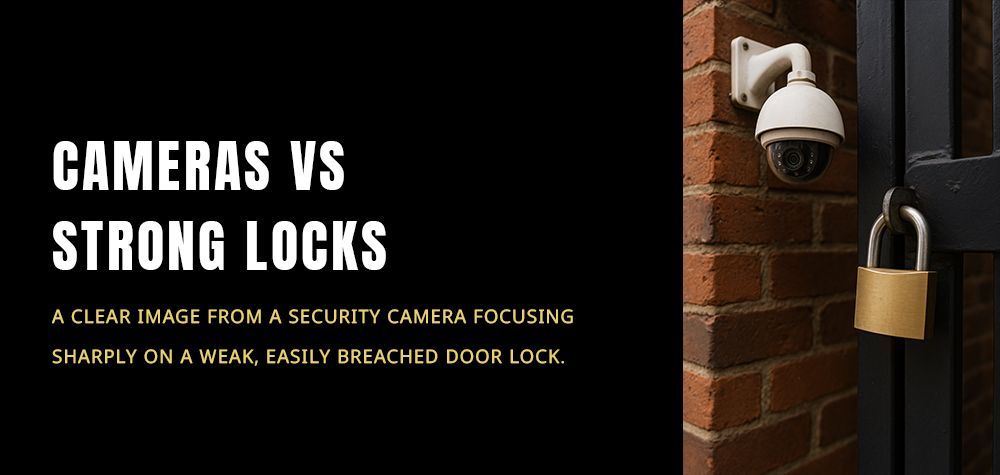What Is Lock Bumping and How to Protect Against It?
Imagine this: You come home after a long day only to find that nothing looks out of place—no broken windows, no forced doors—but something feels…off. You notice items missing, or things not quite where you left them. Your first thought might be, “Did I forget to lock the door?” But here’s a chilling possibility: your lock may have been opened with a simple trick known as lock bumping—and you wouldn’t even know it happened.
Lock bumping is a covert lockpicking method that uses a specially cut key—called a bump key—to open pin tumbler locks. These are the most common locks used in homes, apartments, and businesses across the world. The unsettling part? Bump keys are shockingly easy to make, and the technique requires minimal skill.
It’s the kind of break-in that leaves no trace—and unless you know what to look for, you won’t know your lock has been compromised.
How High-Security Locks Are Tested Against Lock Picking & Bumping
How Lock Bumping Works: The Mechanics Behind the Method
To understand lock bumping, it helps to know how a standard pin tumbler lock functions. Inside the lock, there are a series of spring-loaded pins that must align perfectly at the shear line for the cylinder to turn. This alignment typically happens when the correct key is inserted.
A bump key is a specially crafted key that fits into the lock like a normal one but has all its cuts at the lowest depth. When the bump key is inserted and lightly struck—usually with a screwdriver handle or similar object—it jolts the pins inside the lock just enough for a split second to allow the cylinder to rotate.
This quick jolt mimics the effect of the correct key and, in many cases, opens the lock without damaging it.
The simplicity is what makes it so dangerous.
Why Lock Bumping Is on the Rise
Lock bumping has been around for decades but was mostly known within locksmithing circles as a professional technique. However, the internet changed everything. With countless tutorials, demonstration videos, and DIY guides online, this once-hidden knowledge is now readily available to anyone with a curiosity and a few minutes to spare.
Combine that with how common and vulnerable pin tumbler locks are, and you’ve got a recipe for widespread security issues.
Unfortunately, the locks on many front doors, office entrances, and apartment buildings haven’t caught up with the threat. While homeowners spend money on alarm systems and cameras, many don’t realize their door locks are just as vulnerable as an open window.
What Makes Your Lock Vulnerable to Bumping?
Not all locks are equally at risk. The level of vulnerability depends on the type of lock, its build quality, and whether it has anti-bumping features.
If your lock is a standard pin tumbler without any added security features, it’s likely susceptible. Low-cost locks—often the ones installed by default in homes or purchased at hardware stores—are especially easy to bump. Even some well-known brands are vulnerable if their models don’t include bump-resistant technology.
Locks that haven’t been replaced in several years or are part of a mass-produced hardware set are often the most at risk.
Recognizing the Signs of a Bumped Lock
Here’s the catch: lock bumping often leaves no visible signs of forced entry. Unlike prying or drilling, bumping doesn’t typically damage the lock. That’s part of its appeal to criminals.
However, in some cases, you might notice very subtle clues—tiny scratch marks near the keyhole, unusual resistance when locking or unlocking, or just a general feeling that the lock mechanism feels looser than before.
The biggest clue, though? Missing items when nothing else looks disturbed. That’s when you should consider the possibility of lock bumping.
Expert-Recommended Solutions: How to Defend Against Lock Bumping
Thankfully, protecting your home from lock bumping isn’t rocket science—it just takes a bit of proactive planning and a willingness to upgrade your current hardware. Security experts recommend several layers of defense, starting with your locks themselves.
The first line of defense is switching to bump-resistant locks. These include high-security locks with special pin configurations, sidebars, and complex keyways that make bumping nearly impossible. Brands like Medeco, Mul-T-Lock, and Schlage Primus offer products specifically designed to resist bumping.
For a more modern twist, smart locks with electronic keypads, fingerprint access, or app-controlled systems don’t rely on traditional pin tumbler mechanisms. That means no bump key can be used to manipulate them.
Adding security pins—which are shaped differently and harder to manipulate—is another way to make an existing lock more resistant. While this is typically done by a locksmith, it’s an effective, less expensive solution than a full lock replacement.
Extra Preventive Measures You Can Take
Beyond just upgrading the lock, you can also take extra steps to make your home less inviting to would-be bumpers.
Start by installing a high-quality deadbolt, ideally one that is ANSI Grade 1 certified. Grade 1 locks offer the highest level of residential security. When used in combination with a bump-resistant cylinder, they significantly reduce your home’s vulnerability.
Reinforce your door frames and strike plates. A solid lock is useless if the door itself can be easily forced. Reinforcement kits can be installed by a handyman or DIY enthusiast in an afternoon and add another layer of security.
Consider using keyless entry or a secondary locking mechanism, like a door chain, slide bolt, or smart lock add-on that controls access through an app. These may not prevent bumping directly but can block entry even if the primary lock is compromised.
And don’t forget visibility. Exterior lighting and visible cameras (even if they’re fake) can discourage opportunistic break-ins. Criminals prefer easy, undetectable entries—not well-lit, watched homes.
Talk to a Locksmith: Your Security Partner
If you’re unsure whether your current locks are vulnerable to bumping, the best next step is to consult a local locksmith. A professional can evaluate your current hardware, identify weaknesses, and suggest the best bump-proof or bump-resistant solutions based on your home and budget.
They can also rekey or replace your existing locks with more secure options and install additional reinforcements. Don’t wait until you experience a break-in to make the call.
How to Upgrade Your Home Security with Smart Locks and Cameras
Conclusion: Be Proactive, Not Paranoid
Lock bumping may sound like something out of a spy movie, but it’s a very real and growing threat. Fortunately, it’s one you can defend against with the right knowledge and tools.
By understanding how lock bumping works, recognizing the warning signs, and upgrading your locks with expert guidance, you can protect your home and your peace of mind. Don’t wait for a bump in the night to take action—secure your space now and sleep a little easier tonight.
Because real security doesn’t start with cameras or alarms.
It starts at the door.
Call Us Any Time!






